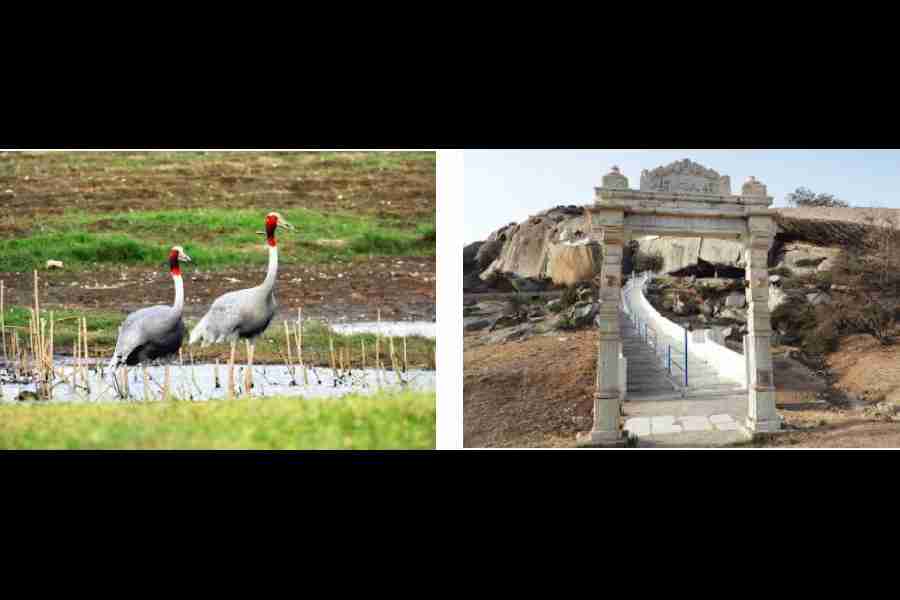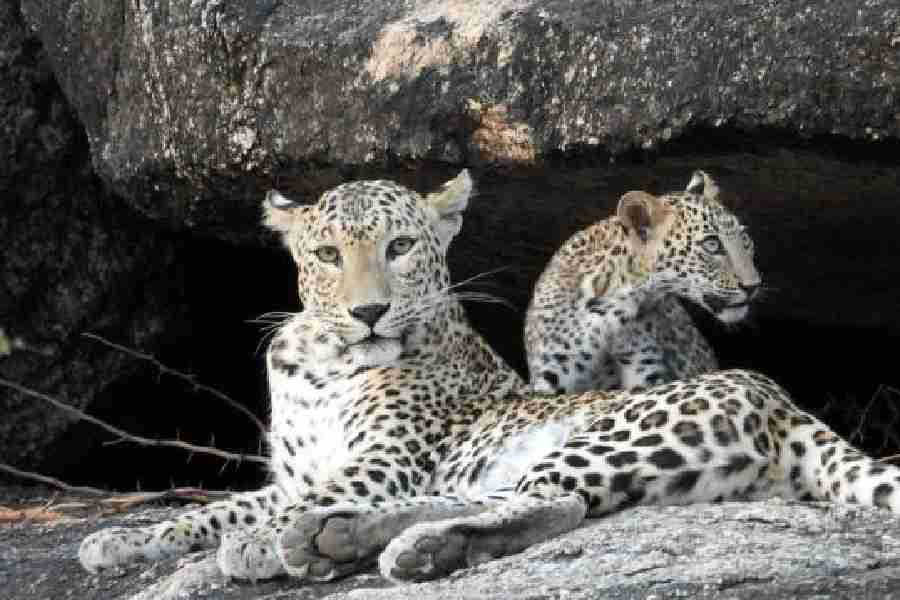A landscape that is home to billion-year-old granite rocks, where the Rabari herdsmen co-exist with leopards and thriving biodiversity, Jawai is one of India’s best-kept secrets.
“Look the leopard is sitting on the rock,” whispered my tour guide and driver Bhawani Singh from WelcomHeritage Cheetahgarh Resort & Spa. I followed the direction his hand was pointing at but drew a blank. It was past 7pm and the fading light was not helping either. Luckily, a slight movement and I could not help but gasp as I saw my first leopard in the wild — a beautiful male that was resting on a rock.
UNIQUE LANDSCAPE
Located about 150km from Udaipur, the Jawai-Bera region is home to about 70 leopards that live among the natural caves in granite rocks, hills and boulders. Interestingly, this landscape is also home to the Rabari, the shepherd community, who have peacefully coexisted with the leopards for hundreds of years. What is more, there have been no reports of man-animal conflict and the Rabari community, who are devotees of Lord Shiva, consider the leopard a depiction of God.
This place is named after the river Jawai, a tributary of river Luni, and is set in an outcrop of one of the oldest mountain ranges in the world, the Aravallis. Maharaja Umaid Singh of Jodhpur built a dam on this river in 1957, which is now called the Jawai Dam, that not just supports the water needs of the people of this region but also of the diverse wildlife that thrives around it.
Today, there are several retreats and hotel properties that have set up camps and rooms making Jawai a sought-after destination as this is how you can experience the different activities. After a close-to-three-hour drive from Udaipur, I was glad I could check into my Luxury Lake View Villa at WelcomHeritage Cheetahgarh Resort & Spa and rest for the night.
LEOPARD LOVE
The next day was my first safari and I opted for an evening safari after a relaxing spa session and local Rajasthani meal where I sampled some unique dishes by Bhanwar Singh Rathore, executive chef at The Rotela Café. They included items like the Ghaat Chaas, a maize porridge with vegetables and Kawa, a delectable one-pot dish of leftover rotis that are cooked with a melange of vegetables.
The safari that starts after 5.30pm is an off-road experience — your heart is very likely to be in your mouth as the Gypsy safari vehicles climb over rocks and navigate the downward stretches of boulders. But this is the only way you can manage to see the stars of Jawai — the elusive leopards.
Despite being common around the world, leopards are hard to trace as they are shy, elusive, secretive and solitary. However, in Jawai, they have accepted human presence, allowing themselves to be watched. They are true carnivores that are excellent ambush predators and mostly hunt at night. Their black, yellow-tan rosettes (rose-like marking) provide excellent camouflage for defence and for stalking. Each coat pattern is unique (like a human fingerprint) and this makes each leopard identifiable.
Apart from being excellent at climbing trees, they can carry large prey up a tree to prevent other predators from stealing it. They can reach speeds of 58kmph and can take horizontal leaps of 20 feet and are excellent swimmers too. Folklore suggests that the people in Bera will forever be ruled over by the leopards. Due to the absence of natural prey, the leopards hunt the sheep. The leopards pick up livestock but do not threaten, harm or assault humans, which the tribesmen consider a good omen.
SIGHTS & SOUNDS
Apart from its leopard sanctuaries, Jawai is known for its exotic birds and crocodiles and is a winter paradise for migratory birds. Stroll through the vast open and windy terrain around the lake as well as the walking path of the Jawai Dam and you will be rewarded with stunning views of the rugged landscape that is brimming with life. I was lucky to also spot the beautiful Sarus Crane as well as the Chestnut-bellied sandgrouse on my trip there.
A visit to the local Rabari village is recommended to see how they live with their goats and sheep and what simple village life pleasures are all about. A home I visited had shoe boxes as nests for sparrows — hung all along the exterior wall of the house.

Bhawani Singh scanning the landscape for leopards
Jawai is also known for several temples cut and carved into rock caves. The most well-known are the Dev Giri Temple and the Kambeshwar Mahadev Temple (this requires you to climb a thousand steps). These temples are dedicated to the goddess of the hills who is believed to guard the entire village. In turn, the leopards guard the temples and roam around freely without harming or threatening the priests and others who come to the temples. Most of the temples are calm and give you stunning views of the rugged landscape.
I spent my last night dining in the open at ‘Jawai under the sky’, a unique dining experience at Cheetahgarh Resort & Spa, nibbling on hot pizzas and gazing at the clear night sky with a stunning view of the stars and constellations. What I learnt was that a visit to Jawai is not just about leopards but a lesson to learn in sustainable living and how you can make small changes to your life once you are back from your trip.

(l-r) A pair of Sarus Cranes at Jawa, The Dev Giri temple
